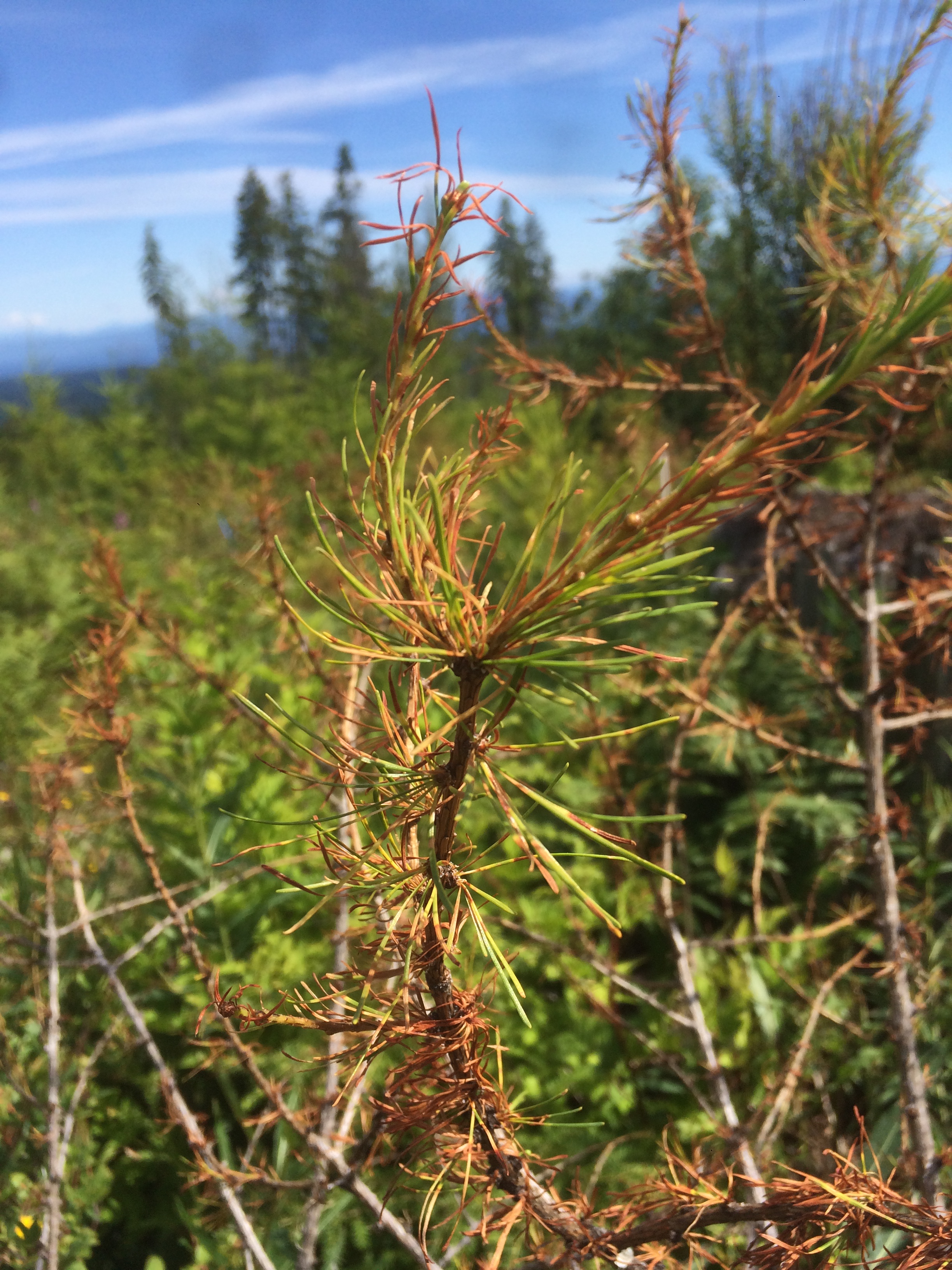Larch needle cast
Larch needle cast is caused by the fugus Rhabdocline laricis (formerly Meria laricis) and it affects all species of larch (native and introduced) in North America. The native larch specie in British Columbia is western larch (Larix occidentalis).
Description
Larch stands generally do not experience serious damage even though the disease may appear to be causing a significant amount of foliage mortality. However, larch needle cast can kill nursery seedlings.
The fungus overwinters in dead needles, either on the host or on the ground. The fungus produces spores in early spring when larch breaks bud. Spores are disseminated by wind or rain splash and infect newly emerging needles. Moisture conditions favour new infections. The fungus may continue to infect needles throughout the summer if moisture conditions are favourable.
Needle discolouration usually only occurs on part of the infected needle and often appears first at the tips and spreads downward. Not all needles on each individual spur are affected. Needles in the lower portion of tree crowns are affected first.
Management
No stand level control measures are practical.

Visible larch needle cast (brown spots on the needles) and larch needle blight (brown needles and dead tufts of needles ).
Contact information
Contact us if you have questions about Lophodermella in British Columbia.
